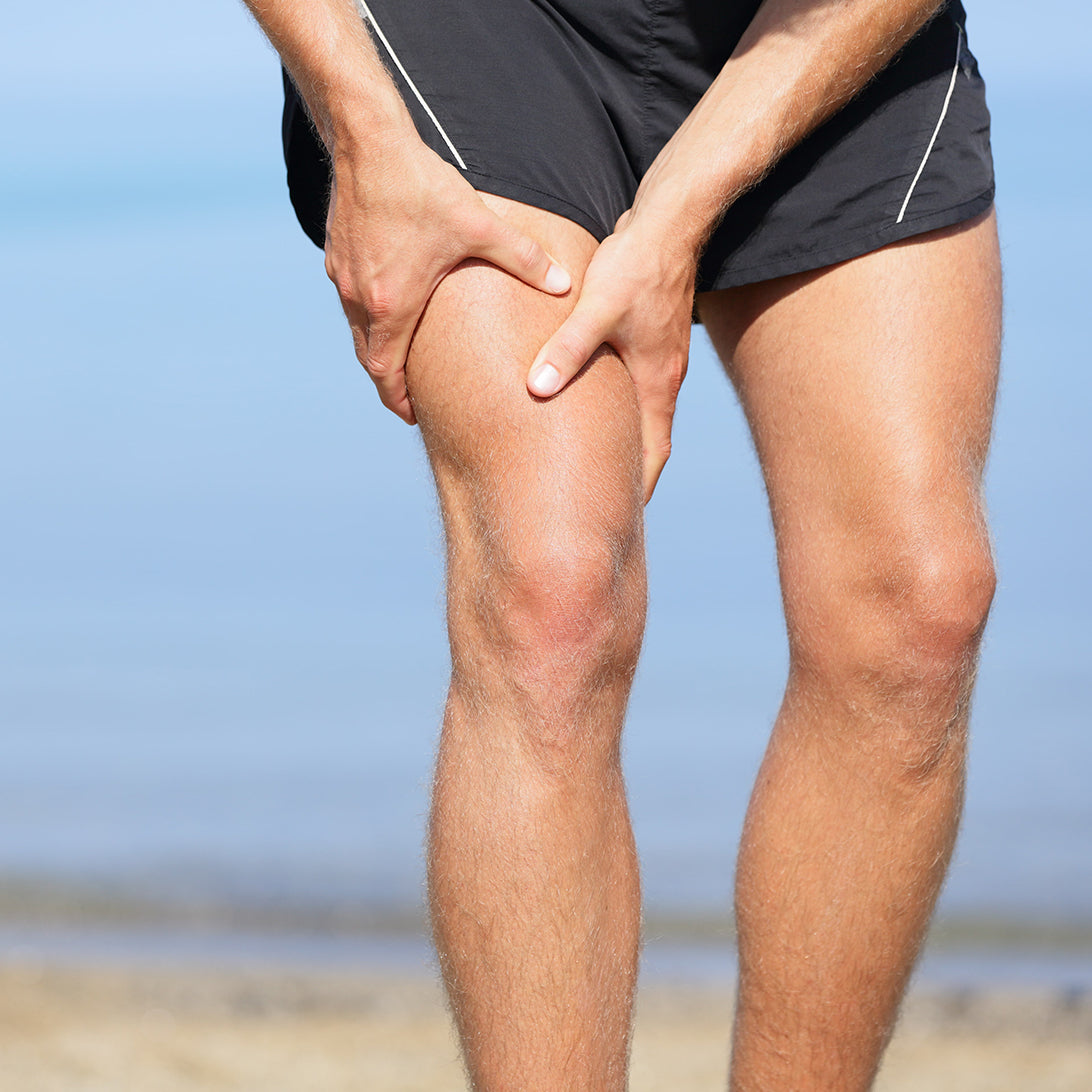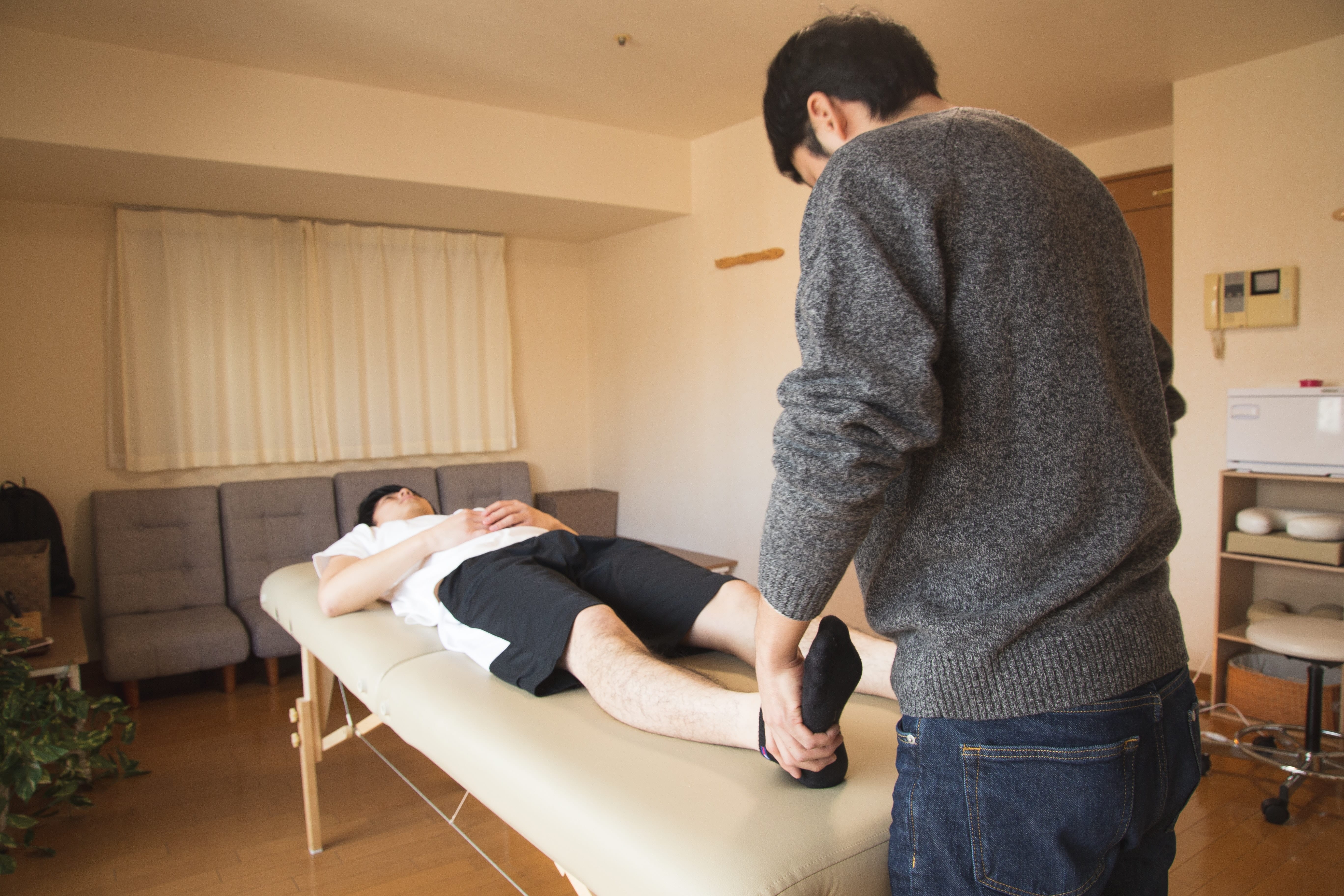Leg cramps in the elderly are a common and often painful problem that can interfere with daily activities.
When most people think of this medical condition, they imagine it happening in younger adults engaging in intense workout programs. However, leg cramps are very common in the elderly and occur for various reasons.
Nobody likes dealing with leg cramps - regardless of age! That goes double for elders who may not have the same capacity to withstand pain or recover quickly.
Fortunately, leg cramps in the elderly don't have to be a way of life.
In this post, we will discuss the potential causes of leg cramps in elderly patients and effective remedies to prevent them.
Read on to find out more!
Common Causes of Leg Cramps in the Elderly
When it comes to leg cramps in the elderly, there are a few common causes that are worth noting. This causes can range from lifestyle factors to underlying medical conditions that require clinical care.
Let's look at some of them:
1. Dehydration
Dehydration is a common cause of leg cramps in seniors.
As we age, our bodies become less efficient at retaining water, which can lead to dehydration and an electrolyte imbalance. Some seniors may also take diuretics, which can further contribute to dehydration.
This can cause muscle cramps and spasms in the lower limbs.
2. Magnesium deficiency
Magnesium deficiency is another potential cause of leg cramps in elderly patients.
Magnesium is an essential mineral that helps regulate muscle contractions and nerve impulses. When levels are too low, it can lead to muscle spasms and cramps.
Low magnesium levels can be caused by various risk factors, including poor diet, certain medications, and chronic medical conditions such as diabetes or kidney disease.
What's more, magnesium deficiency can also be caused by a lack of dietary intake or the inability of seniors to absorb the mineral properly.
3. Medications
Certain medications can also cause leg cramps in seniors.
Some medications, such as diuretics and statins, can lead to electrolyte imbalances that can cause calf cramps. Other drugs, such as beta-blockers and calcium channel blockers, can also interfere with the body's ability to regulate muscle contractions.
For seniors who take multiple medications, this can be especially problematic as the side effects of each drug can interact with one another, leading to increased leg cramps.
4. Muscle fatigue
Leg cramps in the elderly can also be caused by muscle fatigue.
As we age, our muscles tend to become weaker and less able to withstand physical activity. This can lead to muscle fatigue, which can cause cramping and spasms in the lower limbs.
In addition, seniors may not be as active as they once were, leading to a decrease in muscle strength and endurance. When this happens, it can make them more susceptible to muscle cramps.
5. Vitamin deficiencies
Vitamin deficiencies can also be a potential cause of leg cramps in the elderly.
Vitamins are essential for proper muscle function. When levels are too low, they can lead to muscle spasms and cramp development. Common vitamin deficiencies that can contribute to leg cramps include folate, vitamin B complex, and D.
Vitamin D deficiency is prevalent among seniors due to their decreased exposure to sunlight, while vitamin B complex and folate deficiencies can be caused by poor dietary intake or inadequate absorption of these vitamins.
With these potential causes in mind, it is also important to note what lifestyle factors can contribute to cramp development in seniors. These can include a lack of physical activity, smoking, alcohol consumption, etc.
Let's take a look at them in more detail.
Lifestyle Factors that Contribute to Leg Cramps
Lifestyle factors can also play a role in leg cramps in the elderly. Here are some of the most common ones:
1. Sedentary lifestyle
Living a sedentary lifestyle is a significant contributor to leg cramps in seniors.
When seniors are not physically active, their leg muscles can become weak and unable to withstand physical activity. This can lead to muscle fatigue, which can cause cramping and spasms in the lower limbs.
In addition, seniors may not be as active as they once were due to age-related health issues or mobility issues, leading to a decrease in muscle strength and endurance. When this happens, it can make them more susceptible to limb muscle cramps.
2. Smoking
Smoking is also another lifestyle factor that has been linked to causing leg cramps in the elderly. It is thought that smoking can interfere with the circulation and oxygenation of the muscles, leading to cramping and spasms.
The nicotine in cigarettes can also interfere with the body's ability to absorb vitamins and minerals, leading to deficiencies that can cause muscular cramps. In addition, smoking can also lead to dehydration, which can further contribute to muscle cramps.
3. Alcohol consumption
Alcohol consumption can also contribute to leg cramps in the elderly.
Alcohol is a diuretic, meaning it causes the body to lose more water than it takes in. This can lead to dehydration, which can cause muscle cramps and spasms.
What's more, taking beer and alcoholic beverages can interfere with the body's ability to absorb vitamins and minerals, leading to deficiencies that can cause cramps.
4. High levels of stress
Leg cramps in the elderly can also be caused by high-stress levels.
When the body is under stress, it can cause the muscles to tense up and contract, leading to cramping and spasms. In addition, high levels of stress can also lead to poor dietary choices, which can further contribute to vitamin deficiencies that can cause leg cramps.
With high-stress levels, seniors may also be less likely to engage in physical activity, decreasing muscle strength and endurance.
Now that we've looked at some of the lifestyle factors that can contribute to leg cramps in the elderly let's take a look at how seniors can prevent them.
Preventing Leg Cramps in the Elderly
Preventing leg cramps in the elderly is possible with simple lifestyle changes. Here are some tips to help seniors reduce their risk of leg cramps:
1. Stay hydrated
Staying hydrated is an essential part of preventing leg cramps in seniors.
Dehydration can cause muscle cramps and spasms, so elderly patients need to ensure they drink enough fluids throughout the day. Seniors should aim to drink at least 8 glasses of water per day or more if they engage in intense physical activity.
In addition, seniors should also avoid alcoholic beverages and caffeine, as these can lead to dehydration. Instead, they should drink plenty of water or other hydrating beverages with electrolytes.

2. Eat a balanced diet
Eating a balanced diet is also essential for seniors to deal with bad muscle cramps in the leg.
Seniors should aim to include plenty of fruits, vegetables, whole grains, lean proteins, and healthy fats in their diets. With a balanced diet, seniors can ensure they are getting all the essential vitamins and minerals their bodies need to stay healthy and strong.
They should also limit processed foods and sugary drinks, as these can lead to vitamin deficiencies that can cause muscle cramps in patients.
3. Exercise regularly
Preventing leg cramps in seniors can also be achieved through regular exercise routines.
Regular physical activity can help seniors maintain muscle strength and endurance, which can help reduce the risk of leg cramps. Seniors should aim to get at least 30 minutes of moderate-intensity exercise daily.
This could include walking, swimming, or cycling. It's also crucial for seniors to incorporate strength training into their exercise routines. This can help build muscle strength and reduce the risk of leg cramps.
4. Avoid sitting or standing for long periods
Another way seniors can prevent leg cramps is by avoiding prolonged sitting or standing positions.
Sitting or standing for long periods can cause the muscles to become stiff and weak, leading to cramping and spasms. To reduce the risk of leg cramps, seniors should take regular daily breaks to move around and stretch their legs.
This will help keep their muscles active and reduce the risk of cramping.
While certain lifestyle changes can help seniors reduce their risk of leg cramps, home remedies and medications can also help. Let's look into some of these options next.
Relieving Leg Cramps
Here are some home remedies and medications to help relieve bad muscle cramps in the elderly. Many of them can be combined with lifestyle changes for maximum relief.
Let's find out more.
1. Stretching and massaging affected muscles
Stretching and massaging affected muscles can be an effective way to relieve leg cramps in elderly outpatients.
Stretching helps to relax tight muscles and improve circulation, while massage can help reduce tension and pain.
A proven therapy is air compression massage therapy. With this treatment you can reduce tension and pain in a short amount of time. Just take a look at the picture and see what compression massage therapy can do for your muscles.

Seniors should focus on stretching the calf muscles, as this is where most leg cramps occur. They should stand facing a wall with their hands against it and their feet about shoulder-width apart to do this. They should lean forward, keeping their heels on the ground and pushing against the wall until they feel a stretch in their calves.
2. Applying heat or cold to the cramp
Applying heat or cold to the cramp is also an effective way for seniors to reduce the risk of leg cramps. Heat helps to relax tight muscles and improve circulation, while cold helps reduce inflammation and intense pain.
Seniors should apply a warm compress or heating pad to the affected area for 10-15 minutes. Warm baths or showers can also help. For cold therapy, seniors should use a cold compress or ice pack for the same period.
3. Taking over-the-counter painkillers
An effective way seniors can use to relieve leg cramps is by taking over-the-counter pain medication.
Commonly used medications that are effective in relieving leg cramps include ibuprofen, naproxen, and acetaminophen.
Ibuprofen and naproxen are anti-inflammatory medications, while acetaminophen is a pain reliever. To reduce the clinical implications of these drugs, seniors should always follow the instructions on the medication label or consult their health care provider before use.
4. Using a muscle relaxant as directed by a healthcare professional
Using a muscle relaxant as directed by a healthcare professional is another way seniors can reduce the risk of leg cramps. Muscle relaxants are medications that help reduce muscle tension and relieve intense pain.
When using muscle relaxants, it's crucial for seniors to always follow their health care provider's instructions and take the medication exactly as prescribed. It's also important to note that muscle relaxants can cause drowsiness, so seniors should not drive or operate machinery while taking them.
5. Using natural remedies such as essential oils or herbs
Natural remedies such as essential oils or herbs are another effective way to reduce the risk of leg cramps.
Essential oils, such as lavender and peppermint, contain compounds that can help to relax the muscles and reduce pain. Herbs such as ginger, turmeric, and cayenne pepper also contain compounds that can help to reduce inflammation and pain.
To prevent potential side effects, seniors should seek clinical care before using any natural remedies, as some may interact with their medications.
6. Extra tips to minimize leg cramps if you are older
To help reduce the risk of leg cramps, seniors should try to maintain a regular sleep schedule and get adequate rest. If possible, they should also avoid physical activities that may cause their muscles to become overly tired or strained.
Here are some other tips that can help seniors reduce the risk of nocturnal cramps:
- Wear compression socks or stockings
Wearing compression socks or stockings is another effective way for seniors to deal with nighttime cramps.
Compression socks and stockings help to improve circulation in the legs, which can help to reduce muscle fatigue and prevent cramps. Additionally, they provide support for the feet and ankles, which can help reduce the risk of cramping.
When choosing compression socks or stockings, seniors should select the right size and fit for their legs.
- Elevate your legs before bedtime
Elevating the legs before bedtime has also been found to be effective in dealing with nocturnal cramps. It helps to improve circulation and reduce swelling, which can help to reduce muscle fatigue and prevent cramping.
To get the most benefit, seniors should try to elevate their legs for at least 15 minutes before bedtime. This way, they can ensure that their legs are relaxed and ready for a good night's rest.
- Carry out leg stretches before sleep
Doing leg stretches before sleep is another way seniors can reduce the risk of nocturnal leg cramps.
Stretching helps to relax the muscles and improve circulation, which can help to reduce muscle fatigue and prevent cramping. Seniors should focus on stretching their calves, hamstrings, quadriceps, and feet. They should hold each stretch for at least 30 seconds and repeat it several times.
Forceful stretching exercises should be avoided, as they can cause further muscle strain and pain.
- Using a heating pad or hot water bottle on the cramping muscle
Using a heating pad or hot water bottle on the cramping muscle is an effective way for seniors to deal with nocturnal leg cramps. The heat helps to relax the muscles and reduce pain, which can help to reduce the risk of further cramping.
Having warm baths can also be effective in dealing with cramps. Seniors should apply the heat for 15-20 minutes at a time, making sure not to leave it on for too long as this could cause skin irritation.
Frequently Asked Questions
Here are answers to some basic questions about leg cramps in the elderly. If you have any additional questions, please feel free to ask them in the comments below.
What's the difference between leg cramps and muscle spasms?
Leg cramps are sudden, involuntary contractions of muscles in the leg. They can cause pain and discomfort but usually last only a few seconds or minutes.
Muscle spasms, on the other hand, are prolonged painful contractions of the muscle that can last for several minutes or even hours.
I am older. When should I see a doctor for leg cramps?
If you are an older adult experiencing frequent or severe leg cramps, it is important to consult your health care provider.
You should also seek critical care if you experience common conditions such as intense pain, swelling, or numbness in the affected area.
Your doctor may recommend lifestyle changes, such as switching diets to help reduce the risk of leg cramps. They may also prescribe medications or supplements to help manage the symptoms.
Are there any precautions elderly patients should take when dealing with leg cramps?
There are a few precautions seniors should take when dealing with leg cramps. First, they should avoid activities that may cause further strain on the affected muscle, such as running or lifting heavy objects.
Additionally, they should drink plenty of fluids to stay hydrated and reduce the risk of dehydration. Finally, they should get enough rest and take regular breaks throughout the day.
Conclusion
Leg cramps in elderly outpatients are a common problem that can cause pain and discomfort.
Fortunately, there are several lifestyle changes, treatments, and home remedies seniors can use to reduce the risk of leg cramps. Some include stretching, using a heating pad or hot water bottle on the cramping muscle, and drinking plenty of fluids.
If none of these methods, as well as the ones mentioned in the article bring relief, it is essential to consult your healthcare provider for clinical care.
We hope this article has provided you with helpful information on everything you need to know about leg cramps. Feel free to leave any additional questions or comments in the section below.





